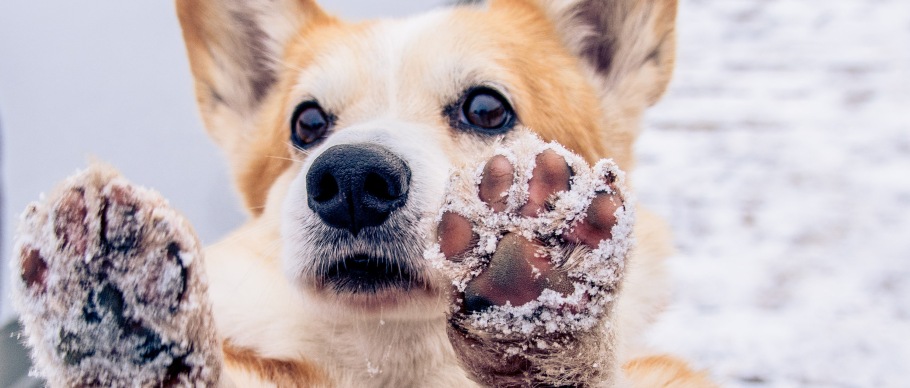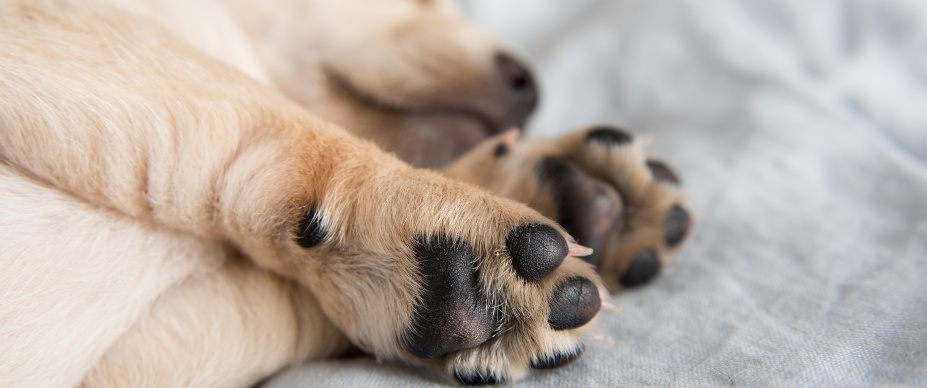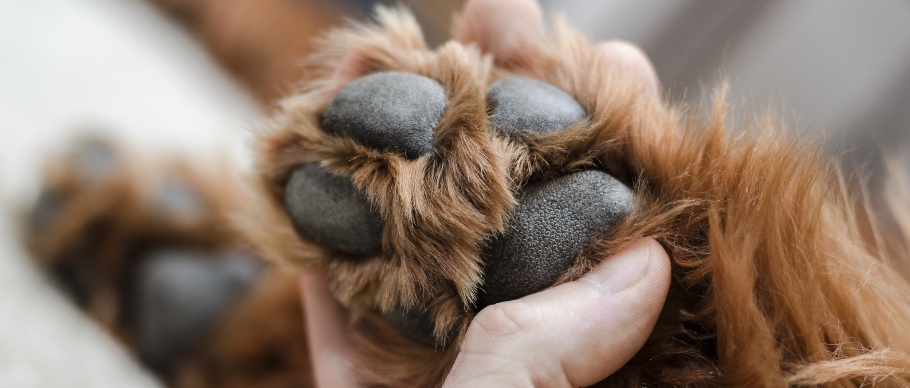5 Reasons Your Dog Has Dry Paws and How to Help
Dogs’ feet are truly no small feat. Not only do the paw pads work hard to absorb all the body’s shock when our furry friends are walking and playing, they also provide balance & stability and even contain sweat glands that help our pups cool down.
While dog paws are tougher than humans’ feet, dry and rough cracks might seemingly appear out of nowhere. Although dry paws are more common than you would think, they can sometimes be a sign of a greater issue going on. Discover the causes of dry dog paws, along with the proper care to help get your fur kid back on the right foot.
Common Causes of Dry Dog Paws

Weather
The dry winter air often draws moisture from dogs’ skin, as it does with humans’ skin, which irritates the paw pads. In snowy winter environments, icy surfaces are frequently treated with salt and sometimes harsher chemicals, which can get trapped between the toes and cause the paws to crack.
Hot Pavement
Did you know asphalt can become more than 50 degrees hotter than the surrounding air temperature? On an 85-degree day, the ground can reach a blistering 140 degrees in the sun. This temperature will burn your dog’s paw pads, which can lead to blisters, surface wounds, or infection.
Allergies
Dogs can have allergies, too! Whether the allergy is a reaction to ticks, food, or the environment, the symptoms can result in irritation. This can make your pup want to itch or lick their paws, which may cause the skin to dry up or even lead to yeast and bacterial growth between the toes.
Tough Terrain
Typically, the thick layers of tissue and keratin in the paw pads should protect dogs’ feet from the ground’s natural elements. If your furry friend is not used to taking long walks on rocky terrain, however, the friction could tear or split their sensitive paws.
Overall Health Problem
According to PetMD, paw pain can be an indicator of your pup’s overall health. Although it is rare, chronically dry dog paws could be associated with an autoimmune condition like arthritis.
While rough or cracked dog paws aren’t always a major health problem, it is important to consult a veterinarian if your dog is licking incessantly, bleeding, or limping because of their dry feet. Swelling and redness could also indicate an infection, which should be checked as soon as possible.
Related: What Kinds of Joint Supplements Are Good for Dogs?
5 Tips for Preventing Cracked Dog Paws
Tip #1: Use grooming scissors to trim the fur between your dog's paw pads. This will reduce buildup between their toes and can help stop matting, which might cause your dog to lick their paws.
Tip #2: Apply a dog paw balm to prevent dry paws year-round. The balm not only creates a protective barrier between your dog’s foot and the terrain, but also moisturizes and restores cracked pads.
Tip #3: Walk on grassy surfaces on hot days. If you live in a city, concrete is a cooler option than asphalt. If you aren’t sure if it is too hot outside to walk your dog safely, a general rule of thumb is if you can’t walk on the surface barefoot for an extended amount of time, then neither can your furry friend.
Tip #4: Build up your pup’s natural calluses slowly by taking them on shorter walks across rugged surfaces over time. Once the calluses start to form, longer hikes on rocky landscapes or dirt roads will be no problem for their feet!
Tip #5: Consider using an indoor pet potty when weather conditions are too hot or cold to take your dog out for an extended period. You can even train your dog to use the indoor potty in addition to their regular outdoor spot. If you and your furry friend must go out for a potty break in extreme weather conditions, a pair of dog booties can help protect their feet.










